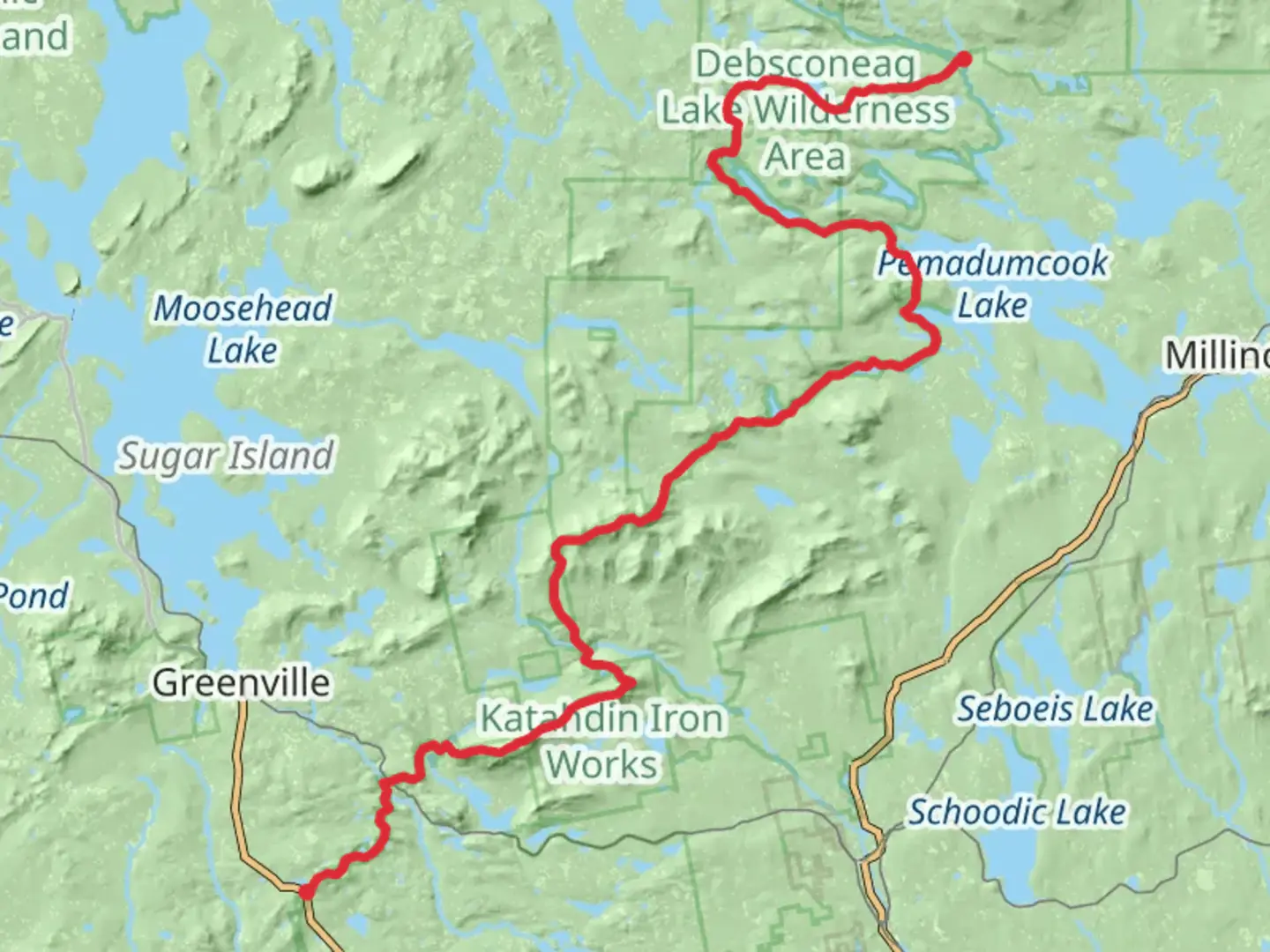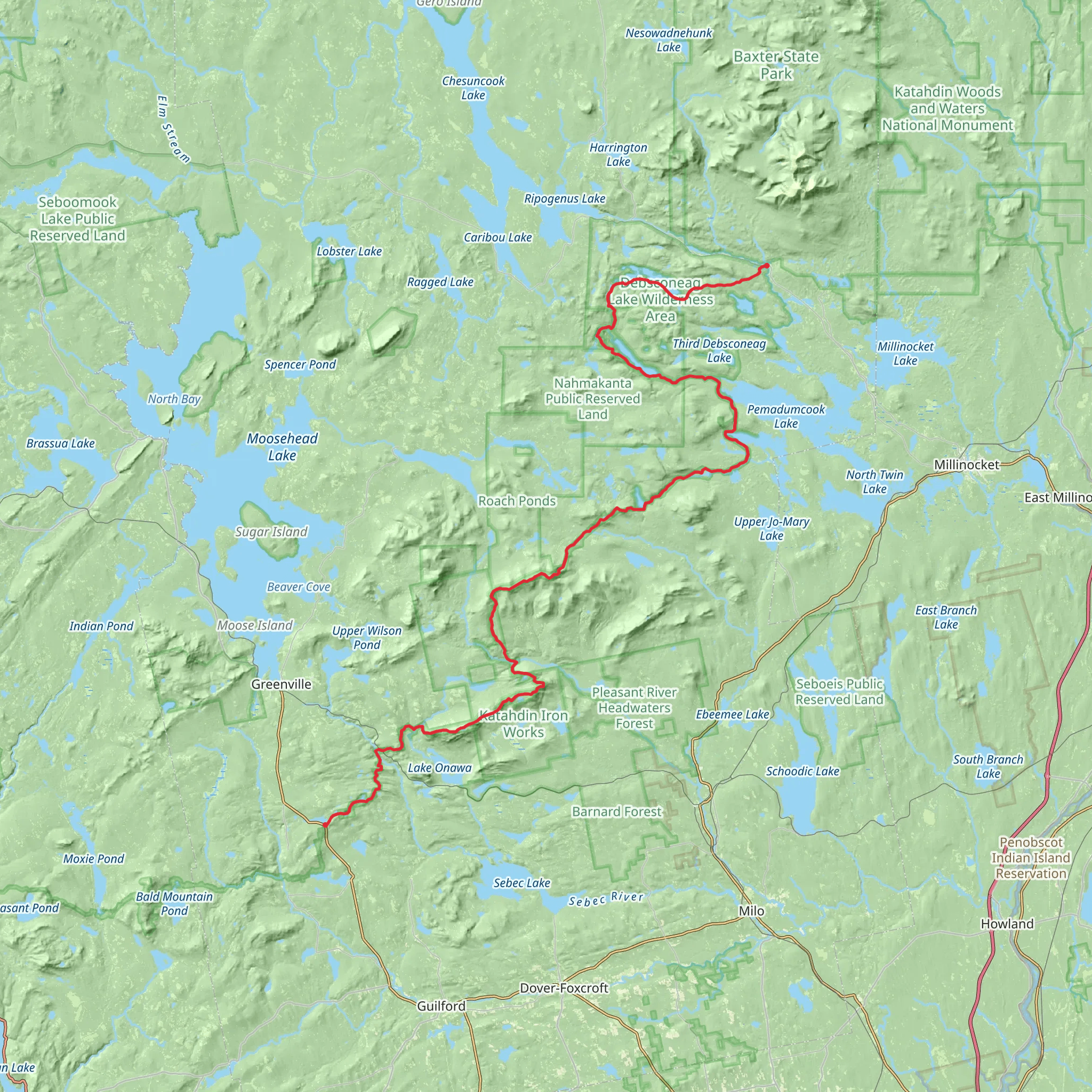
Appalachian Trail Section Hike - 100 Mile Wilderness Trail
Download
Preview
Add to list
More
148.6 km
~9 days
3826 m
Multi-Day
“Trek the 100 Mile Wilderness for an epic Maine adventure, blending rugged beauty with a test of true grit.”
Embarking on the 100 Mile Wilderness section of the Appalachian Trail, hikers will traverse approximately 149 kilometers (about 92 miles) of remote and rugged terrain, with an elevation gain of around 3800 meters (roughly 12,500 feet). This point-to-point trail, nestled in the heart of Maine's vast forests, is a true test of wilderness skills and endurance, offering a serene yet challenging experience.Getting to the Trailhead The northern terminus of this section is located near Baxter State Park, while the southern end begins near Monson, in Piscataquis County, Maine. For those arriving by car, the most common starting point is the southern end, where parking is available near the trailhead on ME-15, just outside of Monson. Public transportation options are limited, but shuttle services from nearby towns like Bangor can be arranged to reach Monson.Navigating the Trail Hikers can rely on HiiKER to navigate the trail, ensuring they stay on the correct path through the dense forests and over the numerous streams and mountains. The trail is well-marked with the iconic white blazes, but due to the remote nature of this section, it's crucial to have a reliable navigation tool.Landmarks and Natural Features The 100 Mile Wilderness is known for its pristine lakes, steep mountain ascents, and the serene beauty of the Maine woods. Notable peaks along the way include Barren Mountain, Chairback Mountain, and White Cap Mountain, each offering panoramic views of the surrounding wilderness. The trail also passes by numerous lakes and ponds, providing opportunities for a refreshing swim or a peaceful rest by the water's edge.Wildlife and Flora As hikers make their way through the dense canopy of spruce and fir trees, they may encounter a variety of wildlife, including moose, black bears, and the elusive lynx. Birdwatchers will delight in the chance to spot species such as the common loon and the pileated woodpecker. The forest floor is adorned with a carpet of ferns and wildflowers, especially vibrant in the spring and summer months.Historical Significance The region holds a rich history, with the trail itself being part of the legendary Appalachian Trail, which spans from Georgia to Maine. The 100 Mile Wilderness skirts the edge of Maine's logging country, and hikers will occasionally come across remnants of old logging roads and evidence of the state's lumbering past.Preparation and Planning Given the trail's remoteness, it's essential to be well-prepared with at least 10 days' worth of supplies, as resupply points are non-existent within the wilderness. Water sources are plentiful, but purification is necessary. Hikers should also be prepared for the variable weather of the Maine backcountry, where conditions can change rapidly.Safety and Leave No Trace Safety is paramount in such a remote area, so it's important to leave an itinerary with someone before setting out and to be prepared for emergencies. Adhering to Leave No Trace principles is crucial to preserving the natural beauty and ecological integrity of the trail for future hikers.By planning ahead, respecting the wilderness, and being prepared for the challenges ahead, hikers can look forward to an unforgettable journey through one of the most secluded sections of the Appalachian Trail.
Comments and Reviews
User comments, reviews and discussions about the Appalachian Trail Section Hike - 100 Mile Wilderness Trail, Maine.
4.9
average rating out of 5
10 rating(s)
